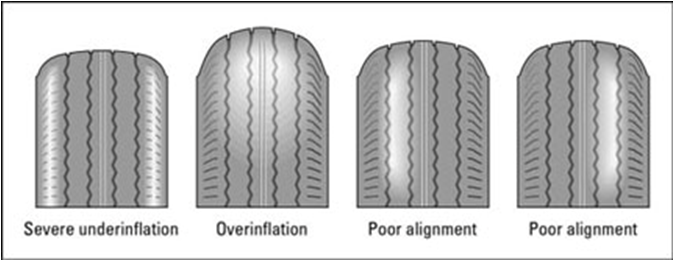Checking Your Tires for Wear
You should check your tires for wear at least once a month and before and after long trips. To determine whether you need to (a) buy new tires, (b) have your wheels balanced, (c) have your wheels aligned, or (d) change your driving habits, simply read your tire treads for clues. Table 1 and Figure 1 show you what to look for.
Table 1: How to Read Your Treads
| Clue | Culprit | Remedy |
| Both edges worn | Underinflation | Add more air; check for leaks |
| Center treads worn | Overinflation | Let air out to manufacturer’s specifications |
| One-sided wear | Poor alignment | Have wheels aligned |
| Treads worn unevenly, with bald spots, cups, or scallops | Wheel imbalance and/or poor alignment | Have wheels balanced and aligned |
| Erratically spaced bald spots | Wheel imbalance or worn shocks | Have wheels balanced or replace shocks |
| Edges of front tires only worn | Taking curves too fast | Slow down! |
| Saw-toothed wearpattern | Poor alignment | Have wheels aligned |
| Whining, thumping, and other weird noises | Poor alignment, worn tires or shocks | Have wheels aligned or buy new tires or shocks |
| Squealing on curves | Poor alignment or underinflation | Check wear on treads and act accordingly |



